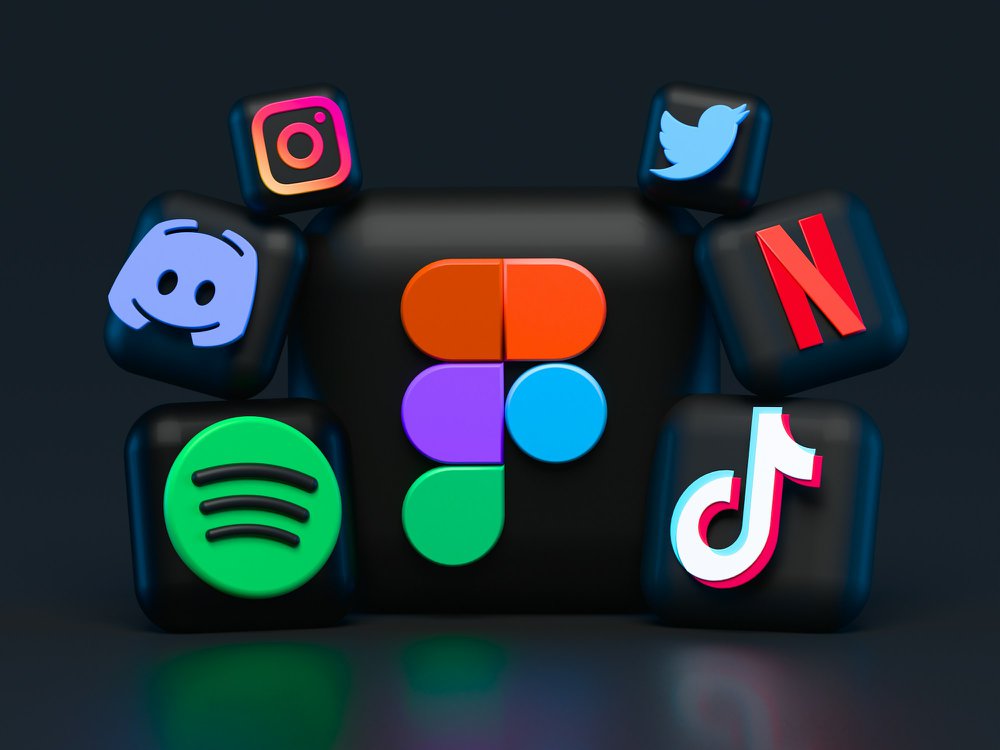You’ve seen it happen, one day a video has a few hundred views, and by the weekend, it’s everywhere. The comments blow up, shares skyrocket, and suddenly everyone’s talking about it.
But what does going viral really mean? And how many views is viral?
The truth is, there’s no single number that guarantees viral status. What counts as viral depends on the platform, the audience, and how fast that video takes off. In today’s world of short-form content and endless scrolling, viral success is as much about connection as it is about clicks.
For brands, viral moments rarely happen by chance. They’re the result of smart timing, genuine emotion, and storytelling that resonates with the people you’re trying to reach, the kind of strategy that turns visibility into real business impact.
What Does Going Viral Mean?

The phrase “going viral” gets thrown around constantly, but what does it really mean in today’s world of nonstop video content?
In simple terms, a viral video spreads quickly across different social media platforms, driven by shares, comments, and high engagement. The faster people react and share it, the faster it moves through different networks, almost like how a real virus spreads from person to person.
But virality isn’t defined by one universal number. What’s considered viral depends on the platform, audience size, and how fast those views stack up. A video with 500,000 views in a few hours on TikTok might reach viral status, while that same number on YouTube could take longer to gain traction.
According to Oberlo (2025), 90% of internet users watch video online every week, and more than 2.5× of social media engagement now comes from short-form videos. With so much competition for attention, going viral is less about hitting a magic number and more about how your content connects, resonates, and keeps viewers watching.
How does the algorithm decide what’s viral?
Each platform looks at engagement signals like watch time, shares, and comments. When people interact early, the algorithm boosts visibility across feeds.
What Makes a Viral Video?

There’s no secret formula for creating viral content, but there are patterns that show up again and again.
The most viral videos share one thing in common: they make people feel something. It might be laughter, surprise, inspiration, or even curiosity. Strong emotions drive action and that’s what turns a simple post into something people can’t help but share.
Of course, viral success looks different across social media platforms. A 20-second clip on TikTok might blow up for its humor or timing, while a brand video on LinkedIn might go viral for its honesty or storytelling. For B2B companies, that kind of engagement doesn’t just build awareness, it builds trust.
One of the first viral moments, “David After Dentist,” racked up millions of views back in 2009. Today, brands like HubSpot, Adobe, and even niche SaaS companies are achieving viral status with short-form videos that mix emotion with insight. These aren’t random hits, they’re part of smart content strategies built around storytelling and audience connection.
In the end, viral videos stand out because they’re clear, authentic, and worth sharing. When your message aligns with your audience’s interests, and your video delivers it with timing and emotion, you’re not chasing views, you’re building momentum.
Want to see how storytelling drives engagement? Check out our post on brand video storytelling for real examples of strategy in action.
What makes people share videos?
Emotion is the biggest factor. People share content that makes them feel something: joy, surprise, or inspiration. Emotional triggers turn casual views into shares.
What Makes Online Content Go Viral?

Every viral video starts with a simple idea, but it spreads because of how it makes people feel.
Research shows that people are more likely to share videos that trigger strong emotions, whether that’s joy, awe, or even surprise. Viral content also tends to be easy to understand, visually engaging, and instantly relatable.
Here are five qualities of share-worthy content:
- Emotion: It sparks laughter, inspiration, or empathy.
- Clarity: The message is simple enough to grasp in seconds.
- Relevance: It speaks to a specific audience or cultural moment.
- Timing: It connects with a trending topic or event.
- Authenticity: It feels real, not overproduced or forced.
When these elements align, engagement metrics like watch time and shares start compounding.
How Viral Videos Spread?
Viral videos do not spread by accident. They spread because platforms reward what people react to.
When a video starts getting strong engagement early on, such as likes, comments, watch time, and shares, the platform algorithm takes notice. That engagement tells the system, “People care about this. Show it to more users.” The more people interact, the faster the reach grows.
Each social media platform has its own viral mechanics:
- TikTok: Rewards fast engagement and share velocity.
- YouTube: Prioritizes high watch time and consistent uploads.
- LinkedIn: Boosts posts that drive early conversation and relevance.
According to Later’s 2024 Social Media Benchmark Report, TikTok videos with above-average engagement in the first hour are 75% more likely to appear on the For You Page. That early momentum often determines how far a video will go.
In the end, a few key factors determine how far your content travels: engagement rate, watch time, and timing. When those signals align with strong storytelling and emotional connection, viral moments happen.
Why It’s More Than Just a Numbers Game

So, how many views is actually considered viral? The answer depends on both speed and scale, how fast your video spreads and how many people it reaches.
A video that gets millions of views over a few years is not the same as one that gains traction overnight. Modern viral metrics focus on how quickly your content captures attention, and those viral thresholds vary across platforms:
- TikTok: around 250,000+ views within 24 hours can indicate viral territory.
- YouTube: roughly 5 million+ views in a week is generally considered viral.
- LinkedIn: reaching 100,000+ organic impressions in a few days often signals strong momentum for B2B content.
Ultimately, viral depends on your audience, platform, and timing. A niche industry video with 50,000 views may achieve the same level of influence as a consumer video with millions.
But true viral success is not just about numbers, it is about what those numbers mean. High engagement, watch time, and shares show that your message resonated with a broader audience.
For businesses, achieving viral status is valuable only when it supports real goals: stronger brand visibility, deeper audience connection, and measurable impact. That is why the best video strategies do not chase views; they focus on creating content that informs, inspires, and earns attention for the right reasons.
Pro Tip: Viral reach means little without real engagement. Focus on creating video content that moves your audience, not just your metrics.
How Do I Make a Viral Video?

The truth is, no one can guarantee a video will go viral. Virality isn’t something you plan, it’s something you prepare for.
What you can do is create video content that gives your brand the best chance at viral success. That starts with clarity: a clear message, a relatable story, and an emotion that connects.
Videos that perform best are built on purpose. When your content strategy aligns with what your target audience actually cares about: their challenges, goals, or moments of surprise, engagement follows naturally. That’s what pushes a video into viral territory.
Strong storytelling, clean visuals, and authentic emotion are the foundation. Add timing and consistent engagement, and you’re not just chasing views, you’re building real connection.
But I Want My Video to Go Viral — What Can I Do?
If viral success is on your wish list, there are a few ways to improve your odds, without relying on luck.
Here are key things to focus on when creating viral content:
- Stop the scroll. Lead with a message that grabs attention in the first three seconds.
- Focus on emotion. Videos that inspire, surprise, or make people smile are far more likely to be shared.
- Keep it concise. Short-form contents dominate on every major platform. Trim the fluff, clarity wins.
- Follow trends, but make them yours. Use trending hashtags and formats as a base, then add your brand’s unique point of view.
- Encourage engagement. Ask questions, prompt reactions, or invite users to comment.
- Optimize for sharing. Use platform-specific formats, subtitles, and strong thumbnails.
- Study your metrics. Track watch time, engagement rate, and completion percentage to see what resonates and what doesn’t.
Pro Insight: Virality happen when the right story meets the right audience, and video production plays a major role in getting there. At Levitate Media, we help brands craft engaging videos built for reach, emotion, and real business results. Explore our Video Production Services.
How to Go Viral: Social Media Platform-Specific Strategies for 2025

Every platform has its own version of “viral.” Understanding those differences helps you craft video content that fits the format and the audience.
- TikTok: Focus on trends, sound, and speed. The first three seconds matter most. Authentic, unpolished short-form videos drive the highest engagement.
- YouTube: Watch time rules here. Longer videos that deliver real value perform best, especially when paired with strong titles and thumbnails.
- Instagram: Reels dominate in 2025. Pair visuals with trending audio and captions that invite interaction.
- LinkedIn: B2B videos that share insights or tell real brand stories earn more comments and organic reach than polished ads.
- Facebook and X (Twitter): Share short, emotional clips with captions that spark discussion or reactions.
No matter the platform, the formula stays the same: post consistently, engage with your audience, and study your analytics to see what resonates.
Frequently Asked Questions
How many views is considered viral?
There’s no universal number, but generally, a video that reaches hundreds of thousands of views in a short time is considered viral. On TikTok, that might mean 250K views in 24 hours, while on YouTube, 5M in a week is a strong benchmark. Learn how to optimize your video strategy here.
What makes a video go viral on social media?
Viral videos spread fast because of strong engagement signals: high watch time, shares, and comments. The most viral content connects emotionally and encourages viewers to participate.
Can B2B videos go viral too?
Yes. When B2B companies share authentic, story-driven content, it can travel just as far as consumer campaigns. Thoughtful production and clear messaging help videos perform across multiple platforms. See examples in our Case Studies.
What makes people share videos?
Emotion is the biggest factor. People share content that makes them feel something — joy, surprise, or inspiration. Emotional triggers turn casual views into shares.
What’s more important than going viral?
Consistency. Viral reach can fade fast, but regular, engaging video content builds brand trust, drives measurable results, and supports long-term growth.
How do you feel about viral videos and business? We'd love to hear your thoughts, so please comment below. If you're interested in making a business video that focuses on your audience, not internet celebrity status, contact us today!









